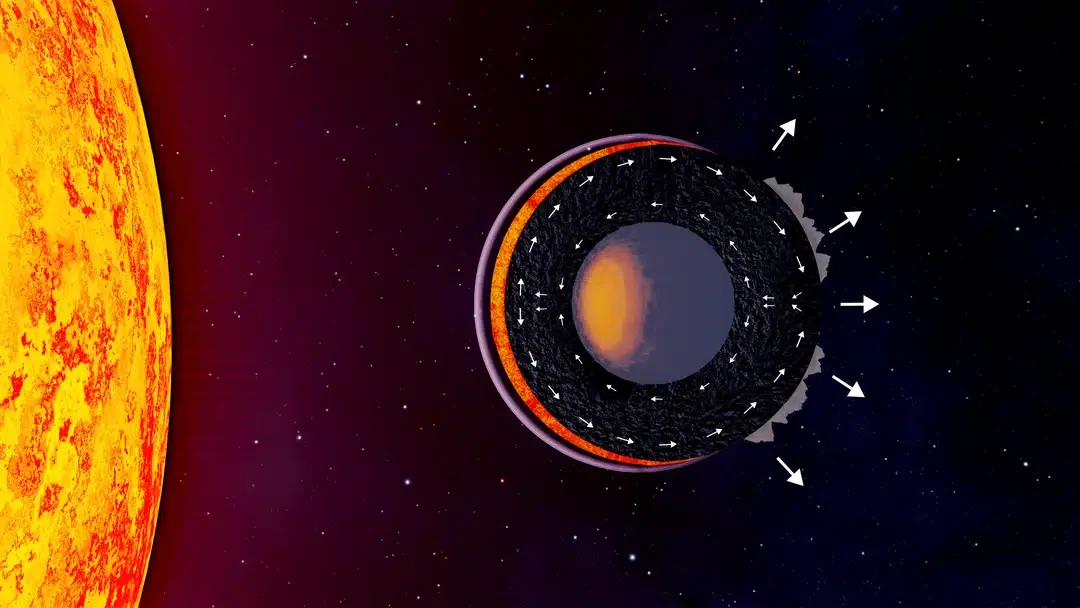Lava planets push the boundaries of our current knowledge in planetary science. Some of these bizarre worlds are the same size as Earth, but they orbit their stars so closely that one year for them is shorter than a single day. Their surfaces are incredibly hot, reaching temperatures that can melt rocks or even turn them into vapor. This makes the conditions here incredibly different from those on Earth, Mars, or Venus. Still, it’s precisely these harsh elements that can help us understand how rocky planets evolve over eons.
Understanding Molten Worlds: A Fresh Perspective
Recently, a pivotal study by Charles-Édouard Boukaré, a physics professor at York University, published in Nature Astronomy, introduced a cutting-edge approach to unravel these volcanic planets. Boukaré and his team melded geophysics, atmospheric science, and mineral chemistry to deeply analyze how molten rock, vapor, and solid crust interact over lengthy timescales.
“Lava planets have such extreme orbital setups that what we know about rocky planets in our solar system doesn’t apply directly,” warns Boukaré. Through the use of advanced numerical simulations, researchers identified two stark interior states. Younger lava planets remain in a fully molten state, allowing heat to flow freely, and causing their atmospheres to reflect the planet’s composition.
The Cycle of Distillation and Planetary Growth
At the core of this investigative effort is the idea of chemical distillation. As rock melts or vaporizes, elements segregate due to their unique properties. Heavier elements like magnesium and silicon usually stay in liquid or solid forms while lighter ones, like sodium and potassium, can turn into vapor. This ongoing cycle of melting, vaporizing, and solidifying reshapes the planet’s outer layers quite dramatically over time.
According to Boukaré, “While these processes are significantly intensified on lava planets, they share the same fundamental principles that shape rocky planets within our own solar system.” On Earth, similar mechanisms have left longstanding chemical signatures in ancient lava flows and crusts. However, on lava planets, these processes run wild, powered by extreme temperatures and rapid atmospheric loss.
The study also found that magma oceans on lava planets don’t freeze up swiftly like those present on younger planets within our solar system. Instead, they can linger for billions of years, leading to long-term distinctions between vapor, liquid, and solid states.
James Webb Space Telescope to Validate These Predictions
To back up their findings, the research team managed to secure 100 hours with the James Webb Space Telescope (JWST). With its advanced infrared sensors, scientists are poised to meticulously analyze the atmospheres of these lava planets, checking for the presence of elements like sodium and potassium. Finding these elements—or not—could indicate whether a lava planet is still molten or has transitioned to a more stable, solid state.
“If we can effectively distinguish between aged lava planets and newer ones,”Boukaré adds, “it would signify a valuable leap forward in how we view exoplanets.” The project is led by Prof. Lisa Dang from the University of Waterloo, whose team is eager to correlate atmospheric details with the internal processes of these alien worlds.
These findings could redefine not just our comprehension of lava planets but also the overall evolution of rocky planets, including the forces that shaped early Earth and other potentially habitable locales.
Gusty Winds, Magma Oceans, and Chemical Signatures
The unique locking of lava planets leads to another captivating phenomenon—there’s a stark contrast between their scorching daysides and frigid nightsides. Intense winds, fueled by this temperature discrepancy, move vapor and heat across the planet, redistributing materials from side to side.
Past models have investigated these winds but usually overlooked how molten rock interacts with the sinewy solid mantle underneath. The new research tackles this oversight by employing three-dimensional models to observe how rock-forming elements like magnesium, silicon, and iron respond in various states.




















